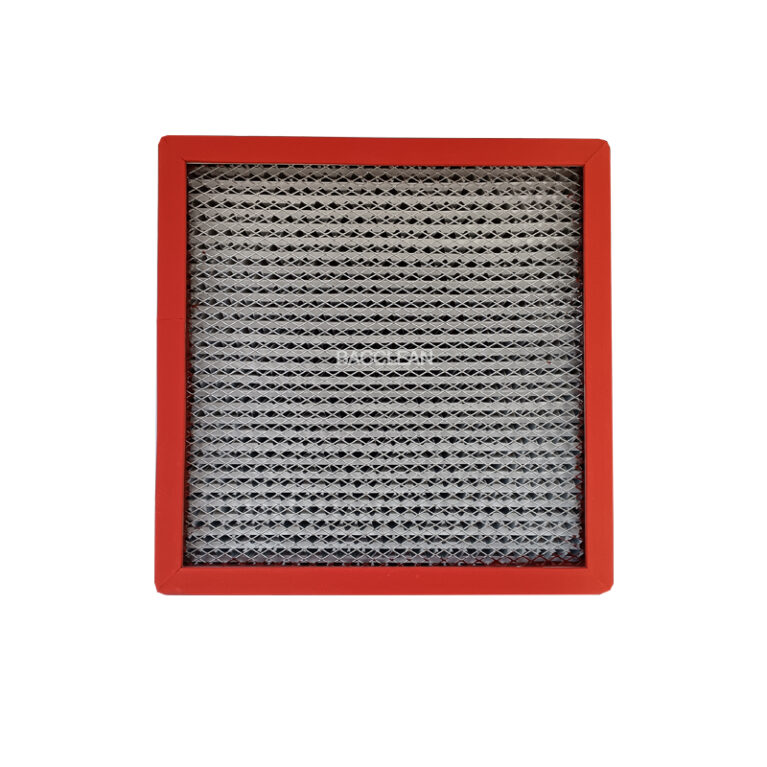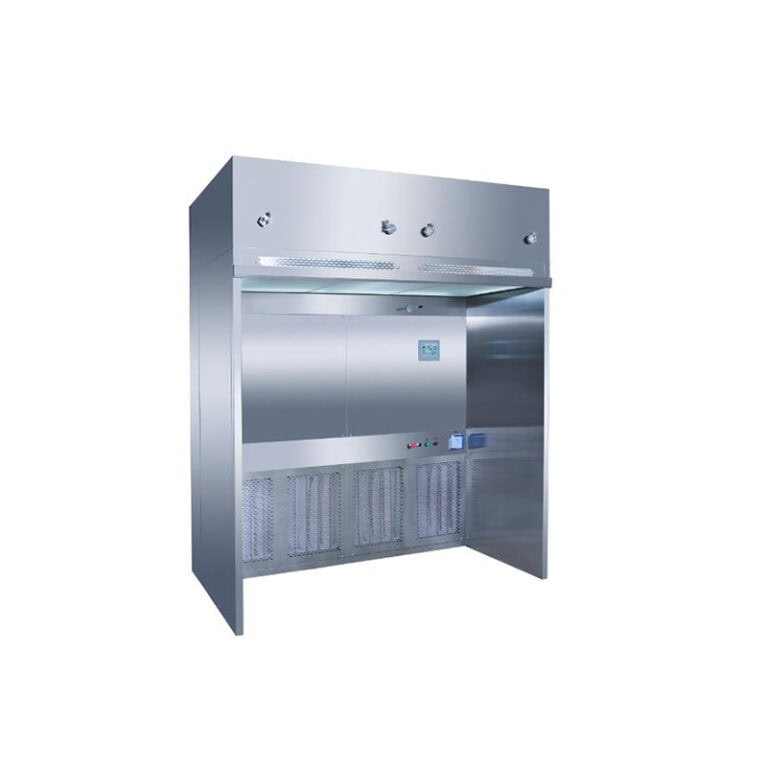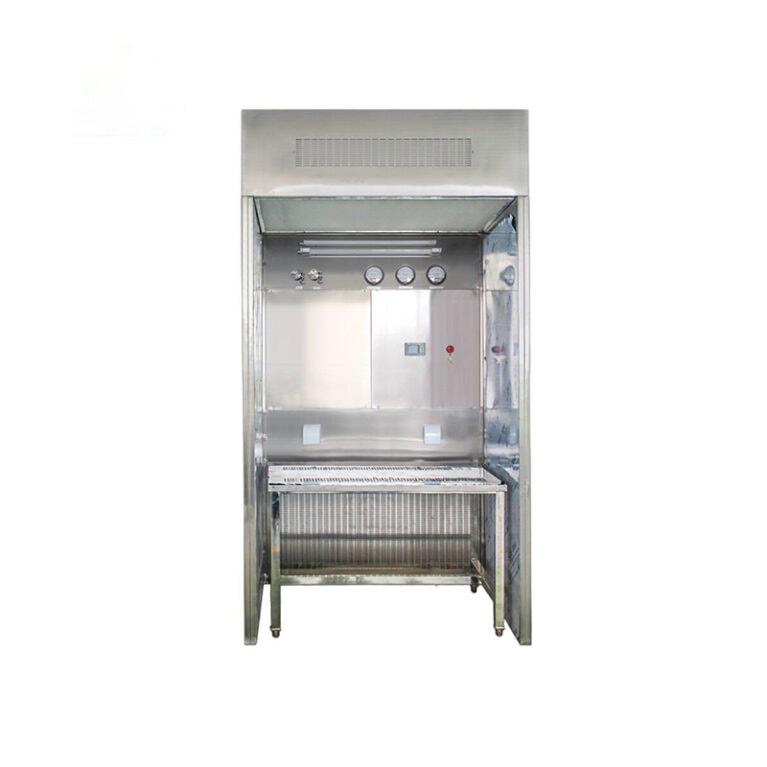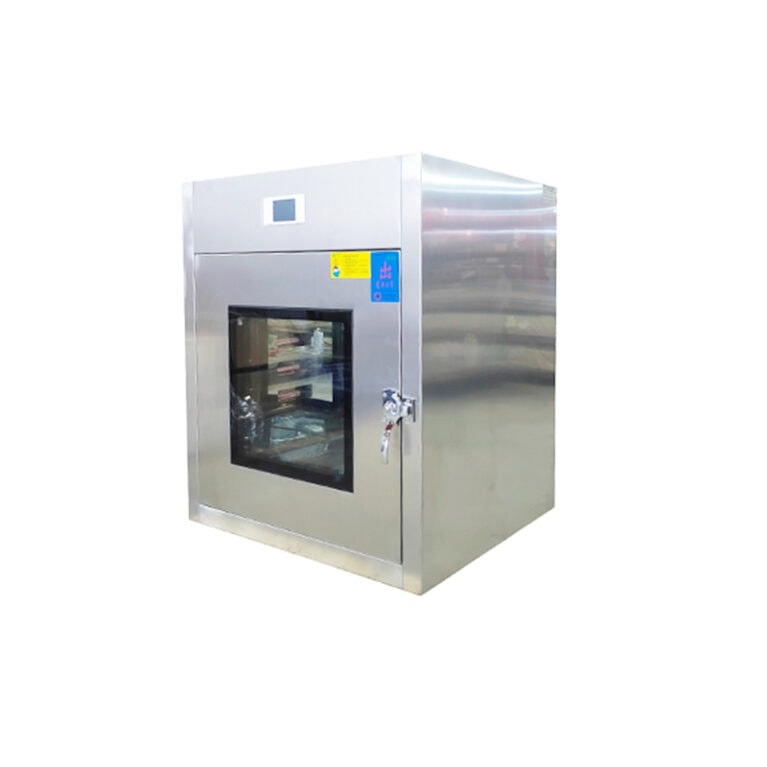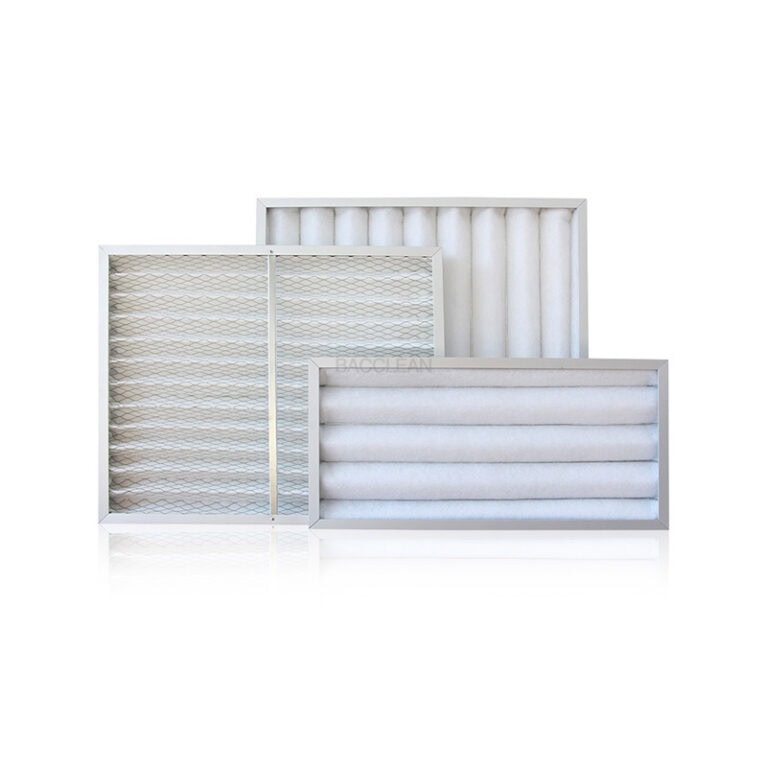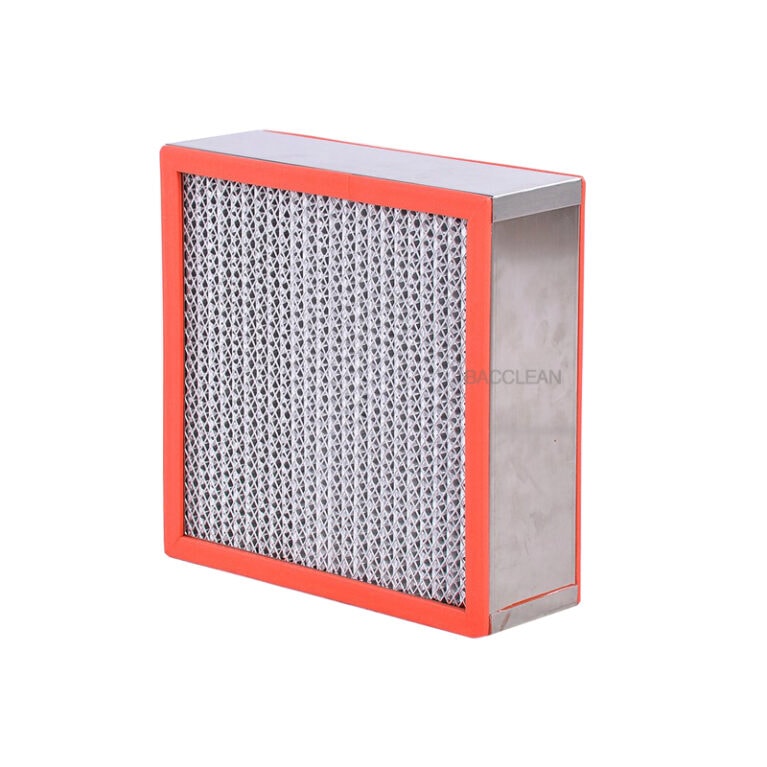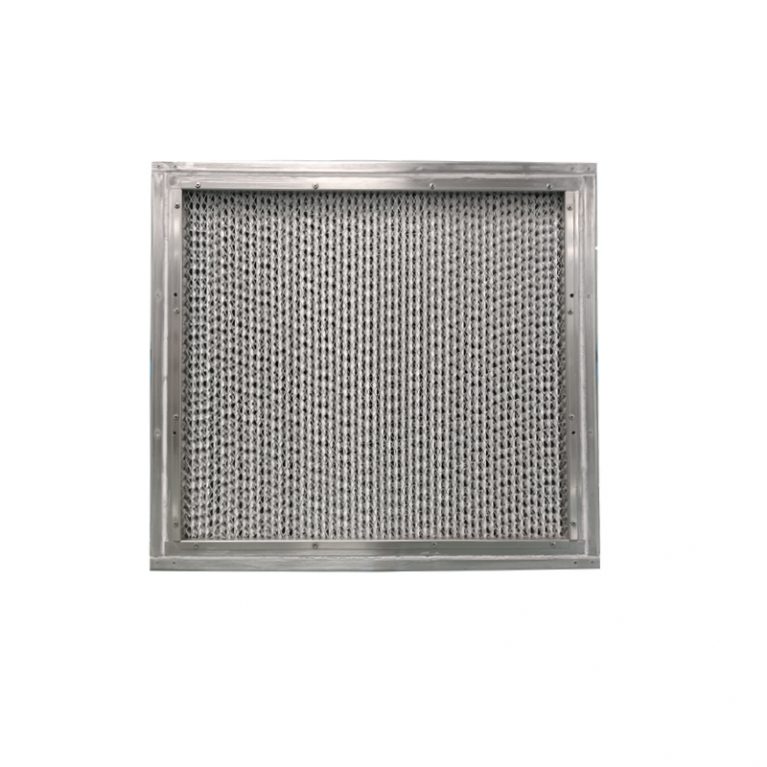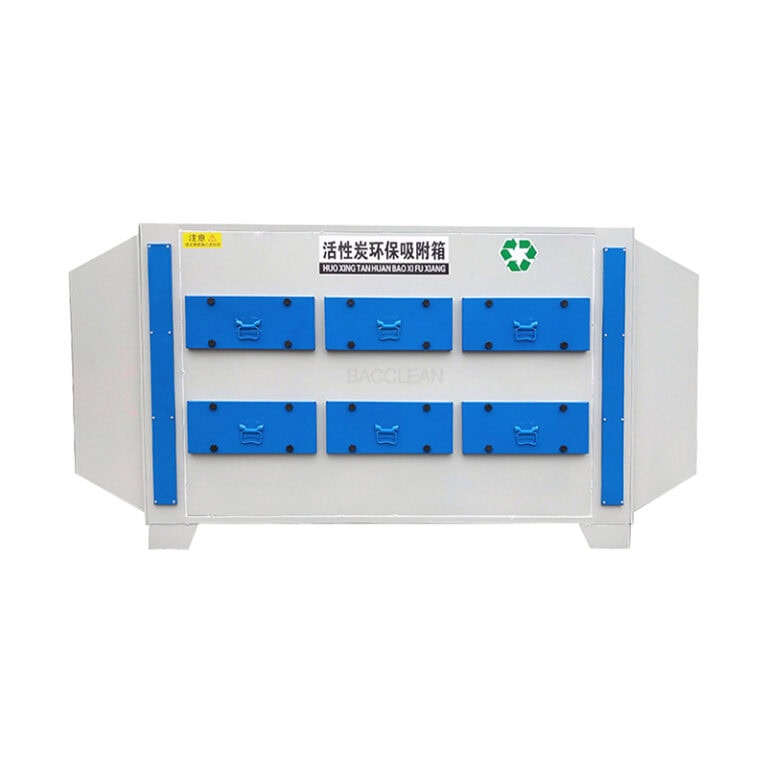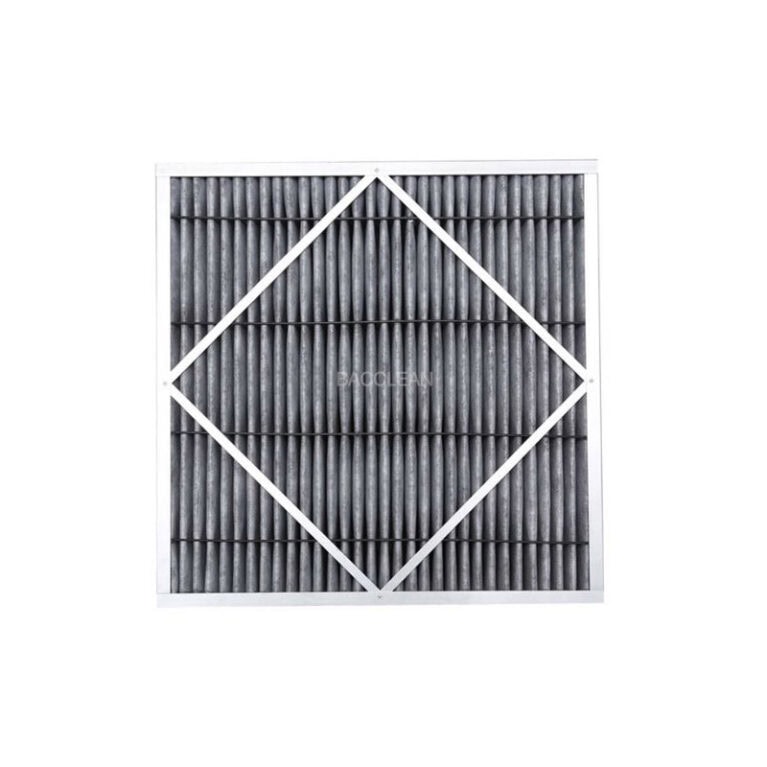The airflow pattern of the vertical flow workbench is the core for achieving a local clean environment. Through the directional, stable, and filtered vertical airflow, a “clean barrier” is formed, which can not only prevent external contamination from entering the operation area, but also quickly remove the contaminants generated during operation. Its airflow pattern can be analyzed in detail from three aspects: “airflow path”, “airflow characteristics”, and “core function”.
I. Airflow path: Unidirectional circulation from top to bottom
The airflow of the vertical flow workbench follows a closed-loop path of “intake air → filtration → vertical supply air → return air/exhaust air”, and the specific process is as follows:
Air introduction
Outside air (or part of the indoor circulating air) enters the equipment through the primary filter at the back or top of the workbench, first removing large particles of dust (≥5μm) from the air to protect the downstream high-efficiency filter.
High-efficiency filtration
The air that has passed the primary filter is sent into the static pressure box at the top by the fan (the internal space is designed as a uniform pressure area), and then undergoes deep filtration through the high-efficiency filter (HEPA or ULPA) below the static pressure box.
HEPA filters can intercept particles of ≥0.3μm, with a filtration efficiency of over 99.97%. ULPA filters have higher precision, capable of intercepting particles ≥0.12μm, with an efficiency of 99.999%, ensuring that the air sent out meets Class 100 (or higher) cleanliness standards.
Vertical downward air supply
The filtered clean air is evenly discharged from the high-efficiency filter at the top of the workbench and flows vertically downward through the operation area (i.e., the space above the workbench surface), covering the entire operation area.
Return air/exhaust air treatment.
After the airflow reaches the workbench surface, it is recovered through the return air outlet under the workbench surface or on the side of the equipment.
Some equipment reintroduces the return air into the primary filter to form a cycle (saving energy consumption).
Some equipment (especially biosafety types) directly discharges the return air outdoors (to prevent the retention of harmful substances generated during operation).
Ii. Airflow Characteristics: Unidirectional, uniform, and stable “air curtain”
The airflow of the vertical flow workbench is not simply “from top to bottom”, but has the following key characteristics to ensure the cleaning effect:
Unidirectionality
The airflow flows strictly in the vertical direction (90° perpendicular to the countertop), without any lateral or disordered airflow. This unidirectionality can prevent pollutant retention caused by “airflow swirling”, ensuring that pollutants in the operation area are directly carried downward.
Uniformity
With the “pressure stabilizing effect” of the static pressure box, the air velocity distribution at the outlet of the high-efficiency filter is uniform (the error is usually ≤±20%), avoiding local air velocity being too high or too low (the standard air velocity is usually 0.3-0.5m/s, which can be adjusted through the control panel).
The airflow covers the entire operation area without any “dead corners” (such as corners and equipment edges), ensuring that every position is under the protection of clean airflow.
Laminar flow state
The airflow flows in a laminar form (that is, each layer of the airflow flows parallel without cross-mixing), and unfiltered air from the outside cannot penetrate this layer of “air curtain” to enter the operation area, thus achieving the effect of isolating pollution.
Iii. The Core Role of Airflow Patterns
Protect the operation object.
The vertically downward clean air flow continuously covers the operation area, acting like an “invisible cover” to prevent dust and microorganisms in the surrounding environment from entering, ensuring that experimental samples, precision components, etc., are not contaminated.
Take away pollutants
Pollutants generated during operation (such as microbial aerosols, dust, and chemical volatiles) will be rapidly “pressed” towards the countertop by the vertical airflow and then discharged through the return air outlet along with the airflow, preventing diffusion or sedimentation in the operation area.
Maintain stable cleanliness
Stable air flow velocity and uniform distribution ensure that the cleanliness in the operation area continuously meets the standards (such as Class 100), and is not affected by short-term operation disturbances (such as arm movement).
Compared with the airflow of the horizontal flow workbench
Vertical flow workbench and horizontal flow workbench
Airflow direction: Top → countertop → bottom (vertically downward) Back → operation area → front (horizontally blowing towards the operator)
Priority protection: Prioritize the protection of the operation object (to avoid external pollution) and prioritize environmental protection (to quickly discharge operation pollutants)
Applicable scenarios: biological aseptic operation, precision assembly, electronic dust removal, and non-aseptic precision operation
The airflow pattern of the vertical flow workbench, through the design of “vertical, unidirectional, laminar flow”, creates a dynamically balanced, clean environment in the operation area, which is the core reason for its wide application in fields such as biomedicine and electronic manufacturing.
